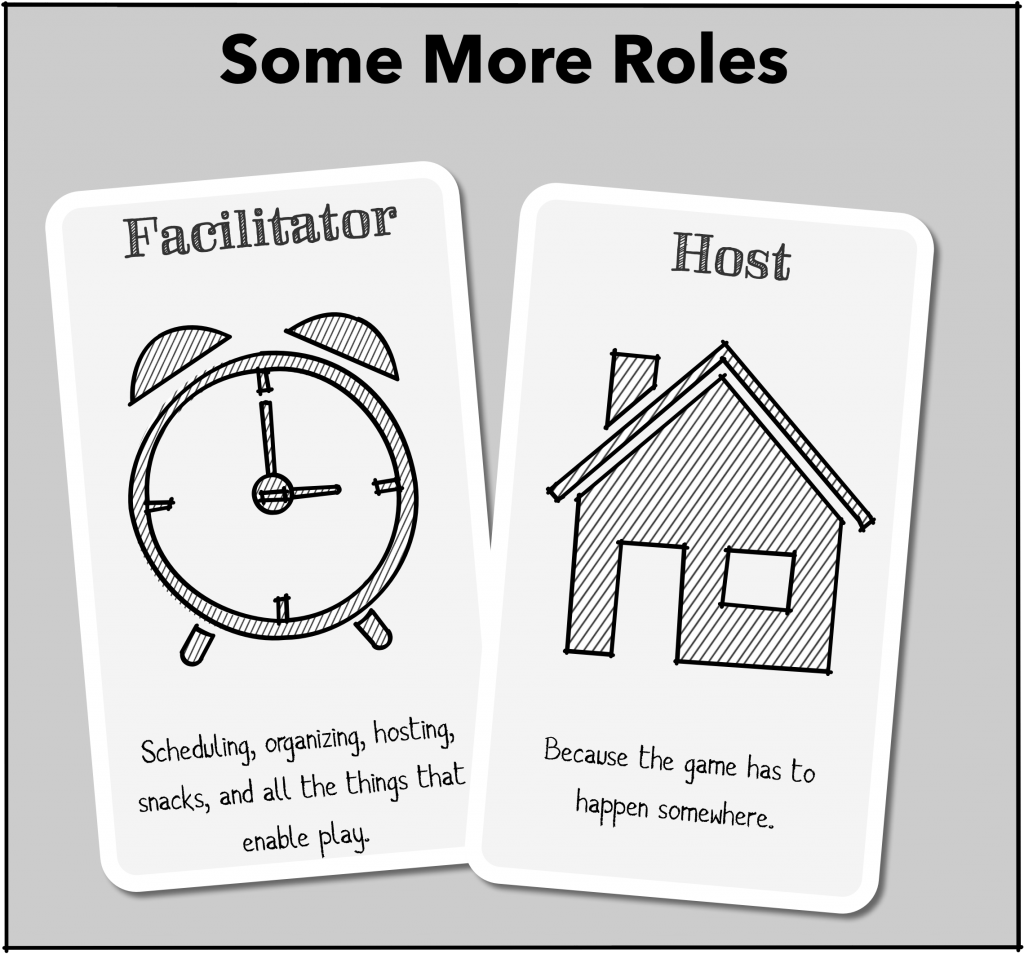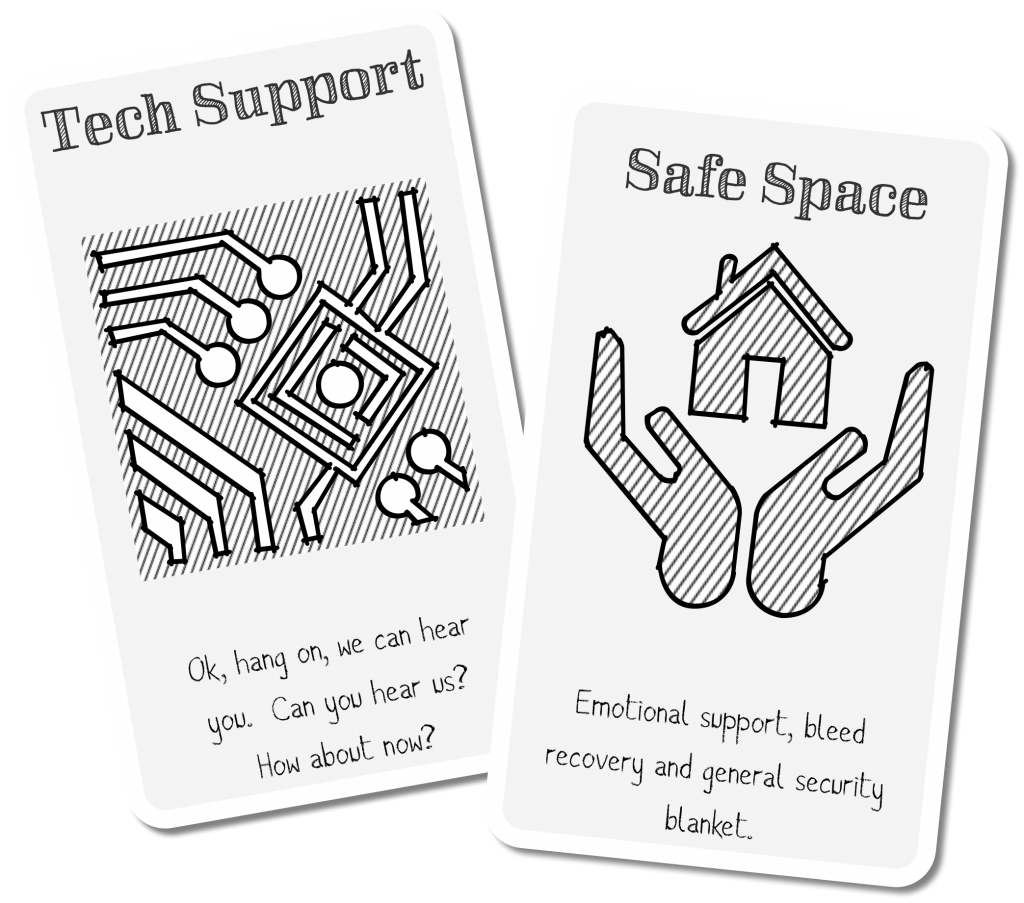I

n our current Daggerheart game, the crew has is traveling on what is effectively a sentient riverboat named The Marquess of Waves. Full explanation is a long story, but the short form is that the clanks in the setting (called “The Gentry”) all have titles and all consider themselves part of “The Great Mechanism” that keeps the world running smoothly. The party are the companions of a newly reborn/rebuilt gentry (they have a Ship of Theseus thing going on with the titles as well) on a formal procession to far off lands.
The actual map for this setting probably deserves its own post, but today, I’m prepping for play and have decided I want to make an actual map of the ship, because a lot of fights happen on it, and because the act of doing so helps cement things a bit for me. Also, important to this, is the fact that I generally use zones for purposes of handling range, which influences my map making and has required a few mechanical adaptations.
What The Heck Are Zones?
Ok, so, first, let me explain zones for the unfamiliar. They’re an abstracted way to handle range for more narrative games. The name came from Fate, and it’s been used in Marvel Heroic, and similar ideas are used in other games under other names. I call them zones out of habit, even though I recognize that it’s a kind of bloodless name.
A zone is, at its simplest, a location for something to happen. A room is usually a zone. If you envision a fight scene in a TV show, the location of that fight (assuming it’s not any kind of dramatic setpiece) is often a zone. In TV, this is usually easy to handle because when you have only a single protagonist in the fight, then the zone is wherever they’re having the fight.
Where it gets interesting is when you think about a multi-character fight scene. When those are described or shot, the heroes are either all fighting together (one zone) or some of them might be in the fight, but far enough removed to not be directly interacting. That maybe sound fiddly if you’re used to thinking about minis and range, but it’s actually simple and conversational.
Let’s say we have a fight going down at a club. If this was a bar, with everything in pretty tight quarters, it might just all be one zone, but let’s imagine this place is big enough that it’s got a bar area and a dance floor. When the fight breaks out, and we imagine it cinematically, the fight on the dance floor is separated from the one at the bar, so that suggests those are the two zones we’ll be working with. The map might be as simple as:

(or, in practice, this will probably be two index cards laid down on the table)
This does not strictly reflect the geography of the area, but it should be easy to intuit. If someone is in the bar area, then they can join the fistfight happening there, but they can’t punch someone on the dance floor without moving to that zone. At heart, it’s as simple as that.
Usually, this method is used as a quick sketch to reflect the situation as it’s described. While you CAN make zone maps out of more detailed maps, that requires thinking about how fight scenes might happen in a space more than specific details of geography. Rather, it’s often simpler to just start with the zones that are relevant to the scene and just add them as needed. So, for example, if the fight in the club has attracted too much attention and our heroes try to flee through the kitchen (only to encounter a knife-wielding combat chef, of course) then we just add another zone to our map for the kitchen.
Thinking in Zones
While zones are useful as an abstraction to handle range and proximity (and also to give us places to put minis without breaking out the grid or ruler) I also find them useful as a GM, because they force me to stop and think about spaces in terms of how we might use them in play.
First, it makes me think about what things might be like WITHIN the zone that makes it something other than a white room fight. What props are there to interact with? What kinds of things might happen to complicate the scene? On the dance floor, I’ll want to bring in the other people dancing, the music, the lights and such. At the bar, there are bottles to smash, stools to swing, and a long bartop that is begging for someone to be slid down it.
These are not things I would necessarily think about when I first describe the club, because my mind if full of all the things the club might contain. Narrowing my focus down to the zone forces me to think in much more concrete terms, which helps me describe things more clearly and colorfully, and that in turn gives the players more to hook onto.
Second, it forces me to think about boundaries and transitions. What does it take to get from one zone to another, and how can that be interesting? In the example above, I don’t imagine any real divider between the bar and the dance floor, so it’s easy to move or see or shoot between them. However, when we introduce the kitchen, I imagine that’s accessible through a door. Is there anything else? Maybe a window for orders to get shouted through? No, not shouted. but definitely a window and counter with one of those paper order spinners and plates under heat lamps.
Being forced to think about the transition has added some details to the scene, but also has provided some sense of how the zone *works*. Because there’s a door, someone could stand in the door and block the way, or maybe drop something heavy in front of it. If they did so, pursuers might be able to shoot or crawl through the passthrough, though that would definitely impede them.
These transitions are often where tactical elements can fit into the narrative. If one zone is on a roof and one is in the alley down below, transitioning between zone is hard to do, and the rooftop folks have a clear advantage (assuming they have ranged weapons), and that fact can shape a scene without needing to anything besides describe the situation.
If you’re inclined to mental exercise, suppose I told you there was also a VIP lounge up on a large balcony that overlooked the dance floor where The Bad Guy sat like a spider in his web. That’s one more zone on the map, but think about what it changes and how you might use it.
Zones and Daggerheart
Let’s talk mechanics. Daggerheart uses a slightly abstracted range system (Melee, Very Close, Close, Far and Very Far) which is designed to map to grid or hex based systems. Melee is adjacent, Very Close is one or two squares removed, close is 6 squares, far is 12, very far is beyond that until something is out of range. You can map the squares to 5 feet or 1 yard or a meter or whatever measurement you like, but the shape of their use should be pretty familiar to folks who’ve played D&D or D&D adjacent games (as is the case with much of Daggerheart).
This means you absolutely can play Daggerheart with a grid, or with war-game rulers, and certain parts of it might even work better that way. But since the system is still nominally abstract, it’s only a small lift to switch to using zones.
Movement
Daggerheart also has very particular movement rules that boil down to “You can move to a location in close range as part of an action, or use your action to move further making a roll with difficulty based on where you’re going. When using zones:
- You can move anywhere within your zone as part of an action
- It’s a separate action to move to an adjacent zone. Difficulty for this starts at 10 and can be increased if there’s a border (like a wall to climb over) or if the character wants to go further (generally by 10 per additional zone)
Combat
We’re going to set aside Very Close range for a moment because it’s an oddball. Everything else is pretty straightforward to map.
- Close Range equates to everything within the zone
- Far range includes the zone and all adjacent zones
- Very Far is, surprise, 2 zones
- Melee is unchanged, and is largely defined by your actions. Since you can freely move within the zone (and so can everyone else), you’re in melee range when you take an action that requires you be in melee range.
That leaves two oddball situation that need to be addressed, and thankfully they’re all dealable.
The first is Very Close. This is a weird category, even in vanilla Daggerheart. Since everyone can move freely within close range, it makes very little sense to have a category like this, and a lot of the time it simply doesn’t matter. As such, it’s worth thinking about what this category actually means in practice: it means reach. It means “I can attack you, but you cannot attack me back”.
In most cases, that fact is all you need. If I’m attacking something with a Very Close weapon, assume I don’t put myself in melee range of them, meaning any melee range counters won’t work, and they’ll need to move to get to me. Easy peasy.
The second is the idea of formations, organization and fiddly things like trying to surround people. There are two ways to handle this:
First, you can absolutely use minis or tokens. Just put them in the zone. Since everyone can move about pretty freely, just place things, and use that to figure out who can practically get into melee with who.
Second, if you want to abstract things a bit, use a bit of simple math: start form the assumption that roughly 6 people could simultaneously attack one target (that is high or low, depending on other assumptions, but it’s nice and easy). For enemies who are fighting in a coordinated fashion – that is, covering each other and not being idiots – reduce that number by 1 per additional enemy in the zone, to a minimum of 1.
Importantly, whatever that number is? That is ALSO the number of enemies who can “gang up” on a single PC at any given moment. So, as such, you can make a decision to add a number from 1-3 to that number (to reflect a more flexible formation), and it will affect both sides.
Drawing the Map
The main complicating factor here is the fact that I cannot draw to save my life. Thankfully, zone maps are pretty forgiving, so I can mostly get by with some shapes. Starting with the boat itself.

I have a pretty good idea of how big the ship is and how it’s laid out based on our play so far. It has open fore and aft decks, a tall middle part (which I can’t find a proper nautical name for) with the cabins and galley), plus a deck on top of that (which is apparently called Monkey Island), plus a large area belowdecks that is mostly machinery and some storage, plus the Marquess’s core. And, of course, a crows nest. (There’s no bridge, because the Marquess IS the bridge)
Thinking in terms of zones, I think the main deck is roughly 4 zones -Aft Deck, Foredeck, Cabins and Galley. The Monkey Deck is probably two zone, and below decks is a little smaller and is probably 3 zones – marquess, engine room and storage. So, a bit of slicing gets us:

When I sketch it out, one thing I realize that that middle part definitely doesn’t go the whole width of the ship, since there should be narrow walkways too each side, so I need to add some small zones for that. I also need to add the crows nest. So, minor tweaks follow:

I could absolutely run with this as is. If anything, this is MORE elaborate than most of the zone maps I create. But I kind of want to lean into this a bit, so we’re going to go a bit past the sketch part, and think a bit more about it, which is the whole point of using the map.
Thinking about transitions, I start by thinking there are stairs going up and down, one set fore and one aft. Logical enough, but then it strikes me that an open staircase going down would be a pretty bad idea in the rain, so that means there needs to be a door or hatch, so I settle on a hatch. And now that I’m thinking about the stairs, I realize they’d be kind of wasteful on deck in terms of space. Ladders maybe? Yeah, let’s go with ladders.
And now that the topic of doors has come up, start wondering about the roots around the cabins and such. Which way do they open? What would make sense? Then I remember that the whole boat is a Clank’s body, and that says to me “sliding doors”, so I’m all in for that.
The exercise kind of continues from there. Thinking about the fore deck and storage beneath it suggests there’s a trap door on the deck for loading and unloading from a crane. It makes me think about the fact that there are railings all around. I think about how a fight in the engine room is going to be different than one on a rear deck. I won’t walk you through every little bit, but hopefully the idea is pretty clear.
So as I think, I clean up the drawing a little bit and I now have a map ready for Miro:






